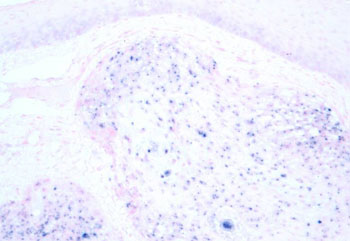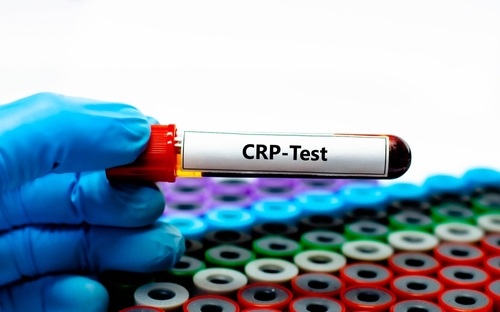Oral HPVs Associated with Risk of Incident Head and Neck Cancers
By LabMedica International staff writers
Posted on 31 Jan 2016
A prospective study suggests that detection in the oral cavity of certain human papillomavirus (HPV) types is associated with higher risk of incident head and neck squamous cell carcinoma (HNSCC), suggesting that the role of HPV in HNSCC may be even more important than currently recognized.Posted on 31 Jan 2016
The oral cavity contains a wide spectrum of α-, β-, and γ-HPV types, but their association with risk of HNSCC (which includes cancers of the oropharynx, oral cavity, and larynx) is unknown. Ilir Agalliu, MD, ScD, of Albert Einstein College of Medicine (Bronx, NY, USA) and colleagues tested mouthwash samples from study participants using next-generation sequencing to detect DNA from α-, β-, and γ-HPV types. Results were adjusted for smoking history, alcohol consumption, and detection of HPV-16 for β- and γ-HPVs.

Image: Human papillomavirus (HPV)-positive head and neck squamous cell carcinoma (HNSCC) identified by in situ hybridization (Photo courtesy of Jennifer L. Hunt, MD, and Wikimedia).
The researchers found that detection of HPV-16 in the oral cavity was associated with 22-times increased risk of oropharyngeal squamous cell carcinoma, demonstrating that HPV-16 detection precedes the incidence of oropharyngeal SCC. They also found that positive associations with HNSCC risk for other oral HPVs usually detected on the skin suggest a broader role for HPVs in HNSCC etiology.
The study was carried out among 96,650 participants from 2 large prospective cohort groups who were cancer-free at baseline and had available mouthwash samples. There were 132 cases of HNSCC identified during an average follow-up of almost 4 years, and 396 healthy individuals (3 per case of HNSCC). The authors noted limitations of the study due to small sample size, which reflects the rarity of HNSCC.
“The use of easily collected oral mouthwash samples can provide a prospective marker for risk of HNSCC and oropharyngeal SCC,” the study concludes.
The study, by Agalliu I et al., was published online ahead of print January 21, 2016, in the journal JAMA Oncology.
Related Links:
Albert Einstein College of Medicine














